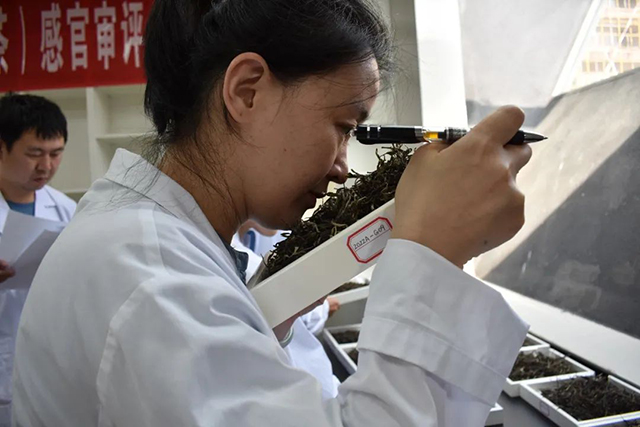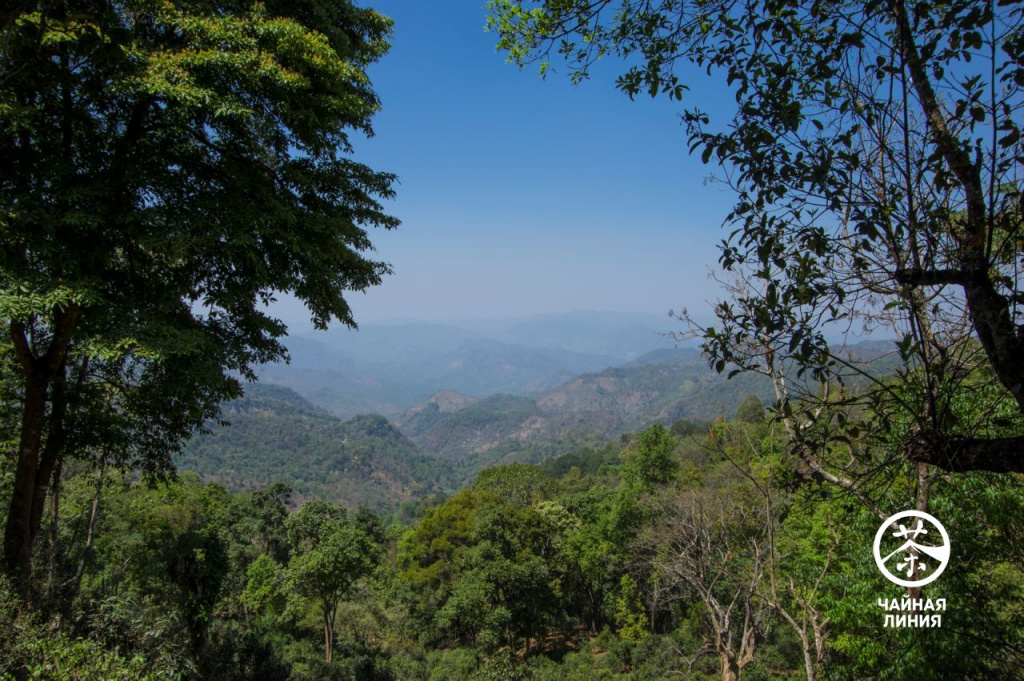Study of the chemical composition of raw puerh from different mountainous regions of China
Tea is one of the most ancient and popular drinks in the world, with a thousand-year history. Since ancient times, it has been noted that the taste and aroma of tea are significantly influenced by the conditions of its cultivation. In China, there is even a saying on this subject, “One mountain – one taste,” which emphasizes that tea from different mountains has different taste characteristics due to differences in microclimate, soil composition, genetic background of tea plants and methods of their cultivation.
In a November 14, 2024 research paper by Chinese scientists Xinyi Zhang, Hongyu Chen, Yan Liu and others , “Unveiling the chemical composition of unique flavor profiles in raw Pu-erh tea from different Tea-Producing Mountains,” samples of raw pu-erh tea from 26 different mountainous areas of Pu'er County were examined to identify the chemical components responsible for their unique flavor.
The aim of this study was to identify differences in the chemical composition and unique flavor profiles of sheng pu'er teas from 26 mountains in the Pu'er City region. The study included sensory evaluation, analysis of major phytochemical components, and identification and quantification of volatile compounds using gas chromatography and mass spectrometry.
Research methods
1. Sensory evaluation: Six trained tasters evaluated the appearance, color of the liquor, aroma, taste and tea leaves. The evaluation was carried out in accordance with Chinese standards GB/T 23776–2018 and GB/T 14487–2017.2. Phytochemical analysis: The contents of water extract, free amino acids, tea polyphenols, soluble sugars and flavonoids were measured. High performance liquid chromatography (HPLC) was used to analyze alkaloids, catechins and amino acids.
3. Identification of volatile compounds: Volatile compounds were extracted using solid-phase microextraction (HS-SPME) and analyzed using two-dimensional gas chromatography with mass spectrometry (GC × GC-QTOFMS). A total of 225 volatile compounds were identified, including hydrocarbons, ketones, alcohols and aldehydes.
4. Gas Chromatography-Olfactometry (GC-O) and Odor Activity Analysis (OAV): Key aroma compounds contributing to the overall aroma of tea were identified. A scale of 0 to 4 was used to evaluate the aroma intensity.
5. Multivariate statistical analysis: Principal component analysis (PCA), hierarchical cluster analysis (HCA) and redundancy analysis (RDA) were used to analyze the data.
Results
The results of the study showed a significant aroma diversity among the pu-erh samples, related to differences in the composition of volatile compounds. More than 225 such compounds were identified, including alcohols, aldehydes, hydrocarbons and ketones, which contribute to the rich aroma palette of tea. Particular attention was paid to key odorants that influence regional aroma characteristics, such as linalool, damascenone and beta-ionone.Statistical analysis showed that geographical factors such as longitude, latitude, altitude and administrative divisions explained about 37% of the variation in the aroma profile of tea. This indicates that other factors may be involved and require further study.
The obtained data provide an important contribution to understanding the correlation between the characteristics of Pu'er tea and its geographical origin, providing a theoretical basis for monitoring and improving the quality of this famous beverage.
1. Sensory evaluation and phytochemical composition: Tea infusions from different mountains showed differences in color, which correlated with the content of tea polyphenols and catechins. The taste of the tea was characterized as rich and thick, with varying degrees of astringency. The aromas of the tea ranged from floral and fruity to clean and fresh.
2. Volatile Compounds: 225 volatile compounds were identified, of which 85 were common to all samples. The main components were alcohols, aldehydes, hydrocarbons and ketones, which contribute to floral, fruity, woody and fresh aromas.
3. Key aroma compounds: Through GC-O and OAV analysis, 21 key aroma compounds such as linalool, damascenone and 2-methylbutyraldehyde were identified, which have significant effects on the aroma of tea.
4. Influence of Geographical Factors: Multivariate statistical analysis showed that geographical factors such as longitude, latitude, altitude and production region explained 37.02% of the variations in aroma profiles. This indicates the possible influence of other factors such as microclimate and cultivation methods.
Conclusions
The results of the study confirm that pu'er from different mountains in the Pu'er region do indeed have unique taste and aroma characteristics, caused by both geographical and chemical factors. The aroma of tea is greatly influenced by factors such as the average temperature in the area, precipitation and soil type. Overall, the study by Chinese scientists confirms that "One mountain - one taste" is not just a beautiful saying, but a scientifically proven fact. Tea produced in different mountainous areas of the Pu'er region does indeed have a unique chemical composition and aroma profile.
A scientific approach to studying pu-erh, which is being conducted in China, allows us not only to deepen our knowledge of its chemical composition, but also to create recommendations for improving the fermentation and storage processes. Such studies open up new horizons for tea masters and connoisseurs, helping them to better understand how nature and production technology create the perfect cup of pu-erh. The full text of the study is available here: ( https://pmc.ncbi.nlm.nih.gov/articles/PMC11754136/ )
- Комментарии
- Вконтакте
Загрузка комментариев...








